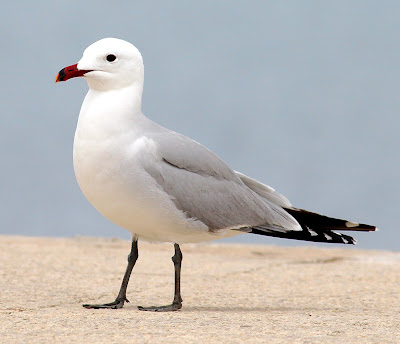Here’s a quick update for blog readers and apologies that I do not have time to visit all my internet friends blogs and answer their comments. i will get back to you all soon. In the meantime and a week on the sun tans are taking shape and we are acclimatised once again to the Menorcan pace of life.
After 4 days in Es Mercadal we moved on to Santo Tomas, a quiet seaside resort in May, a place to strike out for a walk east along the shore and then inland to Es Migjorn Gran or west towards the resort of Son Bou. Either way is good for a spot of immediate birding with Audouin’s and Yellow-legged Gulls providing the background chorus as we find Spotted Flycatcher, Pied Flycatcher, Whinchat, Turtle Dove and Hoopoe before we leave the resort.
Yellow-legged Gull
Audouin's Gull
As the ground opens out we scan the rocky shore and see Common Sandpipers and then bump into Blue Rock Thrush, Stonechat and late Wheatears still heading north.
Upon reaching Platja de Binigaus, the nudist beach, we become a little circumspect with use of binoculars, but notch up Kestrels, Booted Eagles and Red Kite by diverting eyes left to watch the inland fields and tree line. That’s my story and I’m sticking to it.
Commmon Sandpiper
Upon reaching Platja de Binigaus, the nudist beach, we become a little circumspect with use of binoculars, but notch up Kestrels, Booted Eagles and Red Kite by diverting eyes left to watch the inland fields and tree line. That’s my story and I’m sticking to it.
We followed the inland path to Es Migjorn, a quiet, friendly sort of place with too many cafes which serve good coffee but a town where siesta is taken seriously. There was a plan, walk back to the shore through meandering paths where we found the Nightingales, Woodchats, Corn Buntings and Golden Orioles of recent years. Nothing much changes in Menorca, except that I’d love to get a shot of a shy Golden Oriole.
Woodchat Shrike
More from Anothe Bird Blog in Menorca soon.












































.jpeg)




.jpg)













